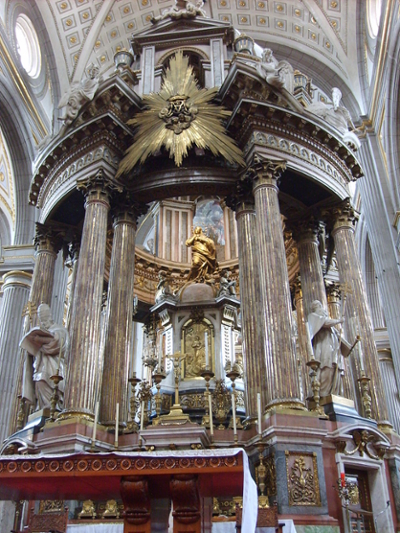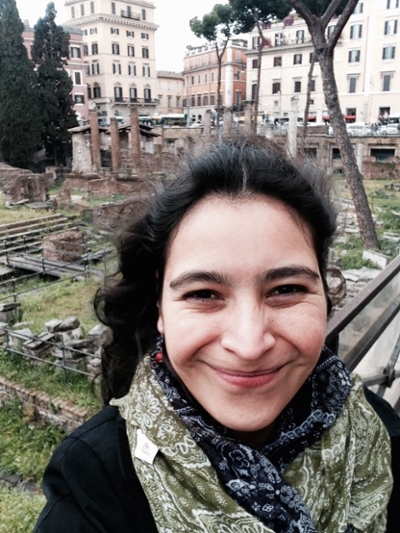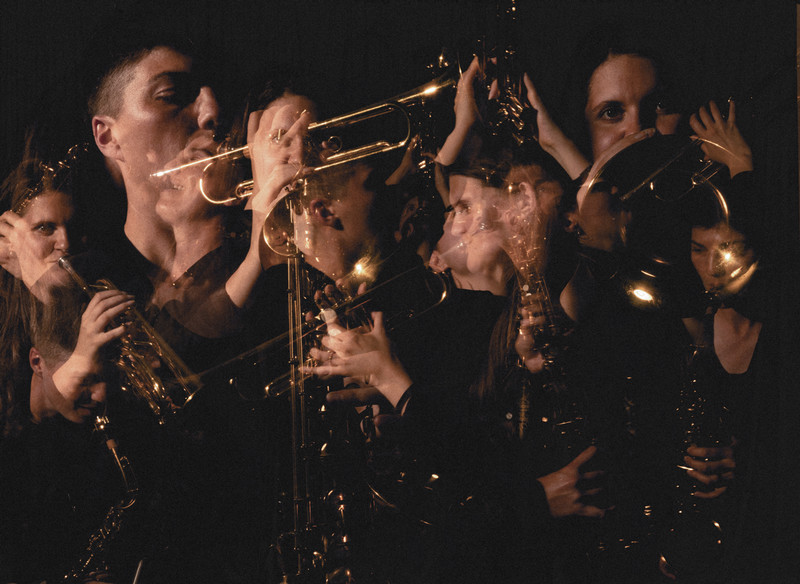Music Scholar Secures Funding to Study Sacred Sounds from the Mexican Baroque
By Tom PorterMany people’s idea of sacred music from the Baroque era—which spanned most of the seventeenth and eighteenth centuries—probably involves a European setting: choirs accompanied by church organs performing the works of Bach or Handel in the cathedrals of Saxony, Rome, or London, perhaps. During the same period, however, similar sounds also reverberated through the churches and cathedrals of New Spain, in present-day Mexico, says Assistant Professor of Music Ireri Chávez-Bárcenas.

Chávez-Bárcenas is researching a book project called Singing in the City of Angels: Race, Identity, and Devotion in Early Modern Puebla de los Ángeles, which examines the relationship between devotional songs and early modern culture in seventeenth-century New Spain. Officially known as the Viceroyalty of New Spain, this vast area included land colonized in the Americas by the Spanish Empire. Chávez-Bárcenas is focusing on the Mexican city today known simply as Puebla (located eighty miles southeast of Mexico City), but which four hundred years ago was Puebla de los Ángeles, a center of Spanish, Catholic culture in the New World.
Her research efforts received a boost earlier this year with the award of a summer stipend from the National Endowment from the Humanities (NEH), one of 225 grants handed out by the organization to support humanities projects across the nation. Chávez-Bárcenas had originally intended to travel to Oaxaca, Mexico, to consult important manuscripts but had to modify her plan because of the COVID-19 pandemic. However, she plans to continue working on her research remotely from her home in Brunswick, Maine, over the summer.
The particular music Chávez-Bárcenas is looking at are sacred songs called villancicos, which she describes as “the most important genre of devotional singing in the Hispanic World in the seventeenth century.” Villancicos, she explains, were required during the major festivals on both sides of the Atlantic. “Together with images and sacred objects, villancicos were regarded as a powerful means to attract and to instruct the laity.”

Chávez-Bárcenas says the vast majority of these songs were written in Spanish. “But,” she adds, “some also used dialects to represent people from different regions or ethnicities, such as Basques, Portuguese, Blacks, or Indigenous peoples. In this way, elements of popular culture were incorporated into the music, providing historians today with a link to everyday life in Puebla four hundred years ago. It is not uncommon,” she continues, “to find marginal ethnic groups being represented in villancicos but it’s really interesting to observe the occasions when local social struggles become part of the liturgical drama.” As an example, Chávez-Bárcenas cites a villancico* where African slaves speak out about their right to attend the Christmas festival because the child Christ was born for them as well. “So villancicos not only attracted worshippers to the church, but they also represented common people, connected to their everyday life, and were central to the formation of social identity.” On top of this, she says, these songs also reflect ideals of devotion of the Catholic Counter-Reformation.
Specifically, Chavez-Bárcenas is examining a collection of 270 villancicos by the Guatemalan composer Gaspar Fernández, who was chapel master of Puebla Cathedral from 1606 to 1629. This collection, known as the Cancionero de Gaspar Fernández, stands among the earliest examples of villancicos in the New World, she says, as well as the largest collection of songs in Spanish from the seventeenth century. “It basically consists of a bounded manuscript where he annotated in chronological order the villancicos that were needed for the major festivals of Puebla. So, it tells us something about the high demand for villancicos at the time.” Importantly, she adds, these songs also offer a fascinating insight into life during the New Spanish Baroque era, both for the colonizers and the colonized.
* “Eso rigo re repente” Villancico en guineo a 5 (1615) by Gaspar Fernández.
This recording is by La Capella Reial de Catalunya - Hespérion XXI – (Jordi Savall, conductor)



